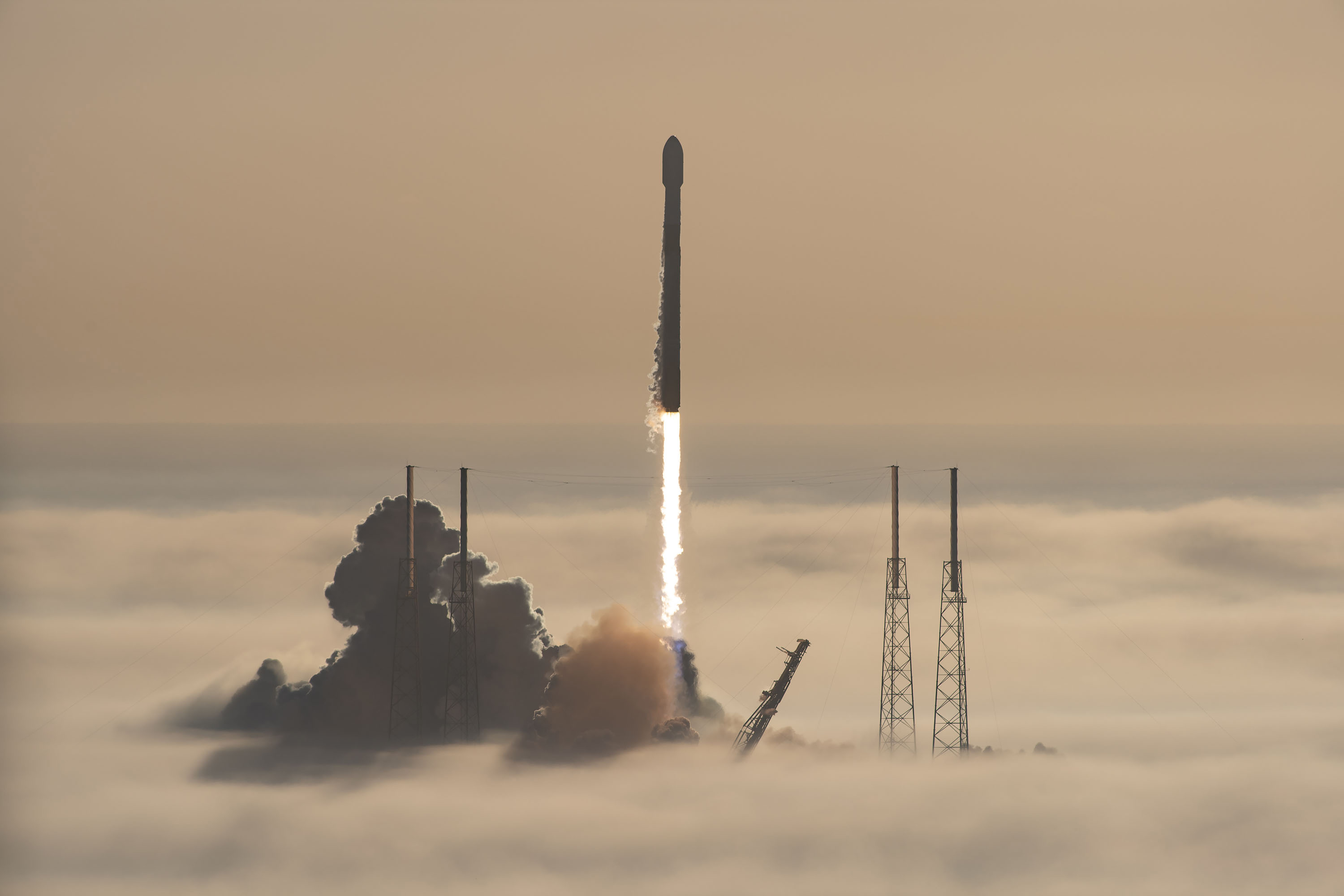SpaceX to launch its next Starlink fleet and 2 BlackSky satellites tonight. Watch it live!
CAPE CANAVERAL, Fla. — SpaceX will launch its next stack of Starlink satellites from the East Coast tonight (Dec. 2) as part of a rideshare mission, and you can watch the action live online.
The private spaceflight company will launch a stack of 48 Starlink satellites on one of its previously flown Falcon 9 rockets. The frequent flier is scheduled to blast off at 6:12 p.m. EST (2312 GMT) from Space Launch Complex 40 at Cape Canaveral Space Force Station in Florida. Tucked inside the payload fairing will also be two small Earth observation satellites for BlackSky.
You can watch the launch live in the window above and on the Space.com homepage, courtesy of SpaceX. Live coverage will begin about 15 minutes before liftoff. You can also watch the launch directly via SpaceX and on YouTube.
Related: Arianespace will launch two European navigation satellites on a Soyuz rocket tonight. Watch it live.
Thursday's flight is the 27th Falcon 9 mission for SpaceX so far in 2021. The flight also marks the second batch of SpaceX's newly upgraded Starlink internet satellites; SpaceX paused launches for about four months in order to equip the satellites with the ability to communicate with each other via laser links. Company representatives have said the new laser links will reduce the constellation's reliance on Earth.
The mission lifting off today will bring the total number of SpaceX broadband satellites launched up to 1,892, with the majority of those launched in a single year. (So far in 2021, SpaceX has launched 889 Starlink satellites, with thousands more planned in the coming years.)
SpaceX created its Starlink program with the goal of providing high-speed internet access to users around the world and as a means to help fund its deep-space ambitions. The service is intended to be available to people around the globe, with a special focus on users in rural or remote areas that have little to no connectivity.
Breaking space news, the latest updates on rocket launches, skywatching events and more!
Related: SpaceX's most-flown Falcon 9 rocket is a sooty veteran after 10 launches and landings (photos)
Tonight's flight will kick off a busy month here on the Space Coast, with as many as five rocket launches on the calendar for December. Those launches include four Falcon 9s and one United Launch Alliance (ULA) Atlas V.
To ensure that Thursday's Falcon 9 rocket is ready to fly, SpaceX rolled the rocket out to the pad on Monday (Nov. 29) ahead of a planned static fire test. The test, which is a routine part of SpaceX's prelaunch procedures and helps engineers know that the rocket is ready to fly, was pushed to Wednesday evening (Dec. 1).
Just seven hours before its planned liftoff, SpaceX confirmed that everything was "go" for launch, and liftoff would occur at 6:12 p.m. EST (2312 GMT) Thursday night.
After the rocket successfully lifts the batch of Starlink satellites into orbit, SpaceX plans to land the booster on the deck of one of its massive drone ships, named "A Shortfall of Gravitas".
Forecasters at the 45th Space Delta have said that weather for a possible Thursday evening launch is ideal, as officials are predicting a less than 10% chance of violating launch weather criteria. The primary concerns are cumulus clouds. If necessary, there is a backup attempt slated for Friday, with conditions also at 90% "go."
Follow Amy Thompson on Twitter @astrogingersnap. Follow us on Twitter @Spacedotcom or Facebook.

Amy Thompson is a Florida-based space and science journalist, who joined Space.com as a contributing writer in 2015. She's passionate about all things space and is a huge science and science-fiction geek. Star Wars is her favorite fandom, with that sassy little droid, R2D2 being her favorite. She studied science at the University of Florida, earning a degree in microbiology. Her work has also been published in Newsweek, VICE, Smithsonian, and many more. Now she chases rockets, writing about launches, commercial space, space station science, and everything in between.

